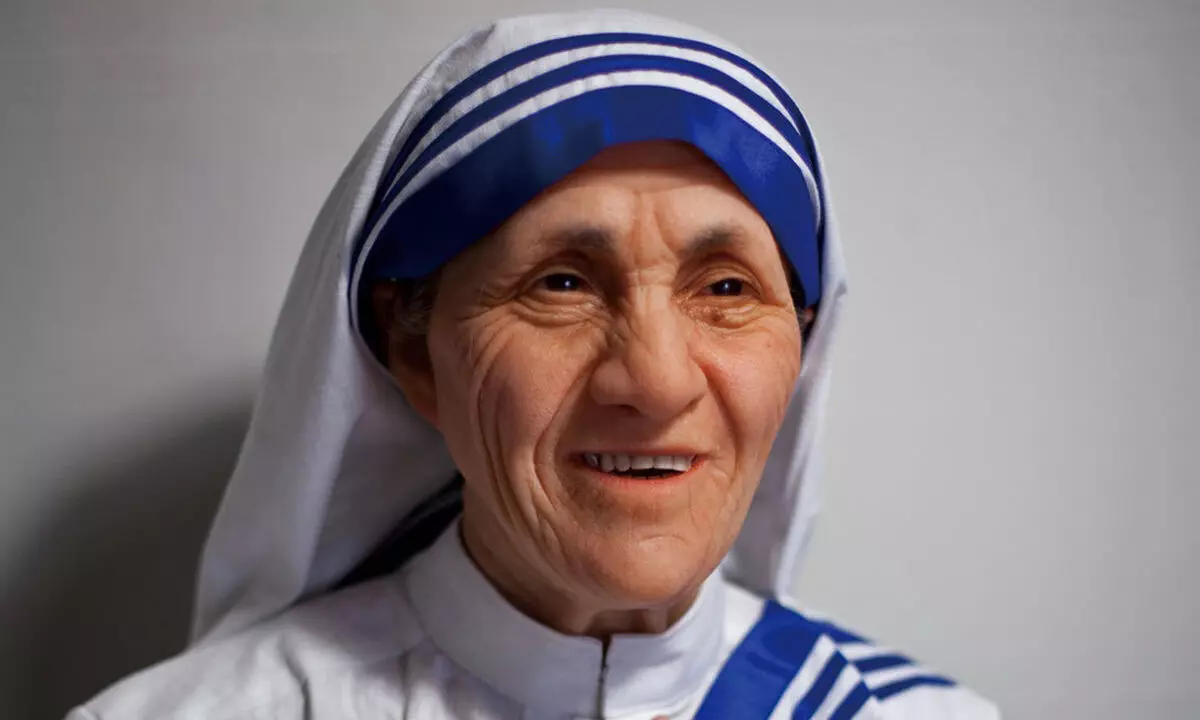
Essay on Mother Teresa An Epitome of Humanity
Mother Teresa was born as Anjeze Gonxhe Bojaxiu in 1910. in Mskopje, capital of the Republic of Macedonia at an early ane she had the inner call to be a nun and serve the poor. At the age of 18, she joined a group of nuns in Ireland. After a few months of training with the Sisters of Loreto, she travelled to India. She took her formal religious vows in 1931, and chose to be named after the patron saint of missionaries St Terese.
She began by working as a teacher in India, however the widespread poverty of Calcutta made a deep impression in her, and this led to her starting a new order called “The Missionaries of Charity”. The primary objective of this mission was to look after people, who nobody else was prepared to look after. Mother Teresa believed that serving others was a key principle of the teachings of Jesus Christ and once said, “Love cannot remain by itself it has no meaning. Love has to be put into action, and that action is service.”
There were two crucial events she faced in India. The first was the Bengal famine of 1943 and the second was the Hindu/Muslim violence in 1946 – before the partition of India. In 1948, she the convent to live full time amongst the poorest of Calcutta. She chose to wear a white Indian Sari, with blue trimmings- out of respect for the traditional Indian dress. For many years, Mother Teresa and a small band of fellow nuns survived on minimal income and food. often having to beg for funds. But, slowly her efforts with the poorest were noted and appreciated by the local community and Indian politicians.
In 1952, she opened her first home for the dying, which allowed people to die with dignity. Mother Teresa often spent time with the elderly and in their last stages. It was appreciated as it allowed many neglected people to die while being cared for by someone.
opened overseas. The scope of their work also expanded to include orphanages, and hospices for those with terminal illness.
Those in the ring homes were given the religious rites appropriate To their faith. However, Mother Teresa very firmly adhered top Catholic faith and took a strict stand on abortion, the death penalty and divorce – even if her position was unpopular. Her whole life way influenced by her faith and religion, even though, at times she confessed she didn’t feel the presence of God.
The Missionaries of Charity now has branches throughout the world including branches in the developed countries where they work with the homeless and people affected with AIDS. In 1965, the society became an International Religious Family by a decree of Pope Paul VI.
In the 1960s, the life of Mother Teresa was first brought to a wider public attention by Malcolm Muggeridge, who wrote a book and produced a documentary called “Something Beautiful for God”.
In 1979, she was awarded the Nobel Peace Prize “for work undertaken in the struggle to overcome poverty and distress, which also constitutes a threat to peace.” She didn’t attend the ceremonial banquet, but asked that the $192,000 fund be given to the poor. In her later years, Mother Teresa was more active in Western countries. She even commented, that though the West was materially prosperous, there was often a spiritual poverty.”
In the last twenty years of her life, Mother Teresa suffered from many health problems but continued her mission to serve the underprivileged. Until her very last illness she was active in travelling around the world to the different branches of “The Missionaries of Charity”. Following Mother Teresa’s death, the Vatican began the process of beatification, which is the second step on the way to canonisation and sainthood. Mother Teresa was formally beatified and is now known as Blessed Teresa of Calcutta. Mother Teresa was indeed a paragon of humanism.
Mother Teresa won many awards for her selfless service to mankind like the Kennedy Prize in 1971. The Nehru Prize-“for promotion of international peace and understanding” (1972), The Nobel Peace Prize (1979) and the list is endless.















